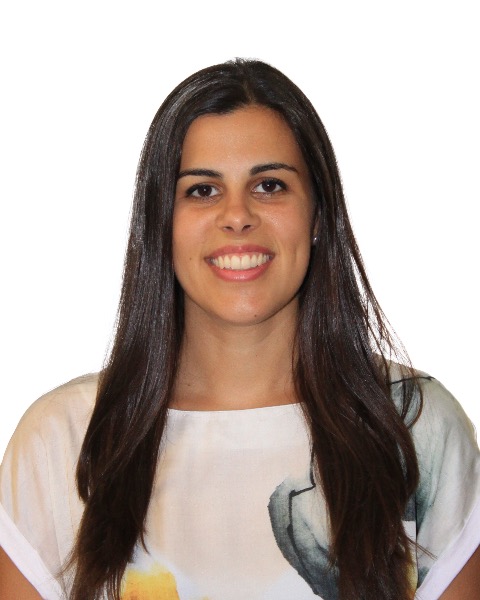Back
Poster, Podium & Video Sessions
Moderated Poster
MP41: Surgical Technology & Simulation: Training & Skills Assessment
MP41-19: Phase I NCT03738488. Feasible 3D printed models of renal cell carcinoma with venous thrombus extension for surgical planning and simulation.
Sunday, May 15, 2022
10:30 AM – 11:45 AM
Location: Room 228
Ines Rivero Belenchon*, Carmen Belen Congregado Ruiz, Gorka Gomez Ciriza, Seville, Spain, Victoria Gomez Dos Santos, Madrid, Spain, Cristina Asensio, Seville, Spain, Cristina Gonzalez Gordaliza, Madrid, Spain, Ignacio Osman Garcia, Jose Manuel Conde Sanchez, Seville, Spain, Francisco Javier Burgos Revilla, Madrid, Spain, Rafael Antonio Medina Lopez, Seville, Spain

Ines Rivero Belenchon, MD
Virgen del Rocio University Hospital
Poster Presenter(s)
Introduction: Renal Cell Cancer (RCC) accounts for 3-5% of all adults malignancies, and up to 10% are presented with venous thrombus extension (VTE). This worsens prognosis and represents a therapeutic challenge. 3D biomodels are printed copies of patients´ radiological images with visual and tactile components that enhance understanding of anatomy and may improve surgical planning, communication and training. This is a Multicenter Clinical Trial (NCT03738488), which aims to assess the efficacy and efficiency of surgery planning with 3D in RCC with VTE. The objective of the phase I is to obtain a feasible, affordable, accurate and suitable for surgical simulation 3D model.
Methods: A CT image in early arterial and nephrogenic phase was obtained. ITK-snap ® and VirSSPA Software ® were used for segmentation. The resulting 3D mesh was processed with MeshMixer ®. Multiple models were printed using different 3D printers and materials. We evaluated: material, scale, thickness, accuracy, suitability for surgery, cost and printing time. 6 urologists completed a satisfaction questionnaire
Results: 4 models were discarded (table 1). The selected one was printed with BQ Witbox FDM printer in polyurethane filament with a 0.8mm thickness and 100% scale. All anatomical structures could be correctly identified with a good accuracy compared to the CT ( < 5mm deviation) and the surgery could be performed on it. Model cost was 15€ and whole processing and printing time 48h.
100% of urologists thought that the obtained 3D model could be useful for surgery planning and simulation.
3D
Model adequacy (yes / no)
Cost (€)
Printing time (h)
Discarded (yes/no)
Reason for discard
Printer
Material
Material
Scale
Thickness
Accuracy
Surgery performance
1
BQ Witbox
Rigid PLA
No
No
Yes
No
No
15
48
Yes
Material
2
BQ Witbox
Flexible PU
Yes
No
Yes
No
Yes
15
48
Yes
Structures identification
3
BQ Witbox
Flexible PU
Yes
Yes
No
Yes
Yes
15
48
Yes
Thickness
4
Stratasys
Polyjet
Agilus flexible
No
Yes
No
No
No
180
72
Yes
precision
BQ Witbox
Flexible PU
5
BQ Witbox
Flexible PU
Yes
Yes
Yes
Yes
Yes
15
48
No
-
Conclusions: - A feasible and affordable 3D printed model of RCC with VTE was obtained.
- It was accurate compared to the CT and suitable for surgery simulation.
- Urologists thought it could be useful for surgery planning and simulation.
Source of Funding: Funded by Pfizer
Methods: A CT image in early arterial and nephrogenic phase was obtained. ITK-snap ® and VirSSPA Software ® were used for segmentation. The resulting 3D mesh was processed with MeshMixer ®. Multiple models were printed using different 3D printers and materials. We evaluated: material, scale, thickness, accuracy, suitability for surgery, cost and printing time. 6 urologists completed a satisfaction questionnaire
Results: 4 models were discarded (table 1). The selected one was printed with BQ Witbox FDM printer in polyurethane filament with a 0.8mm thickness and 100% scale. All anatomical structures could be correctly identified with a good accuracy compared to the CT ( < 5mm deviation) and the surgery could be performed on it. Model cost was 15€ and whole processing and printing time 48h.
100% of urologists thought that the obtained 3D model could be useful for surgery planning and simulation.
3D
Model adequacy (yes / no)
Cost (€)
Printing time (h)
Discarded (yes/no)
Reason for discard
Printer
Material
Material
Scale
Thickness
Accuracy
Surgery performance
1
BQ Witbox
Rigid PLA
No
No
Yes
No
No
15
48
Yes
Material
2
BQ Witbox
Flexible PU
Yes
No
Yes
No
Yes
15
48
Yes
Structures identification
3
BQ Witbox
Flexible PU
Yes
Yes
No
Yes
Yes
15
48
Yes
Thickness
4
Stratasys
Polyjet
Agilus flexible
No
Yes
No
No
No
180
72
Yes
precision
BQ Witbox
Flexible PU
5
BQ Witbox
Flexible PU
Yes
Yes
Yes
Yes
Yes
15
48
No
-
Conclusions: - A feasible and affordable 3D printed model of RCC with VTE was obtained.
- It was accurate compared to the CT and suitable for surgery simulation.
- Urologists thought it could be useful for surgery planning and simulation.
Source of Funding: Funded by Pfizer

.jpg)
.jpg)